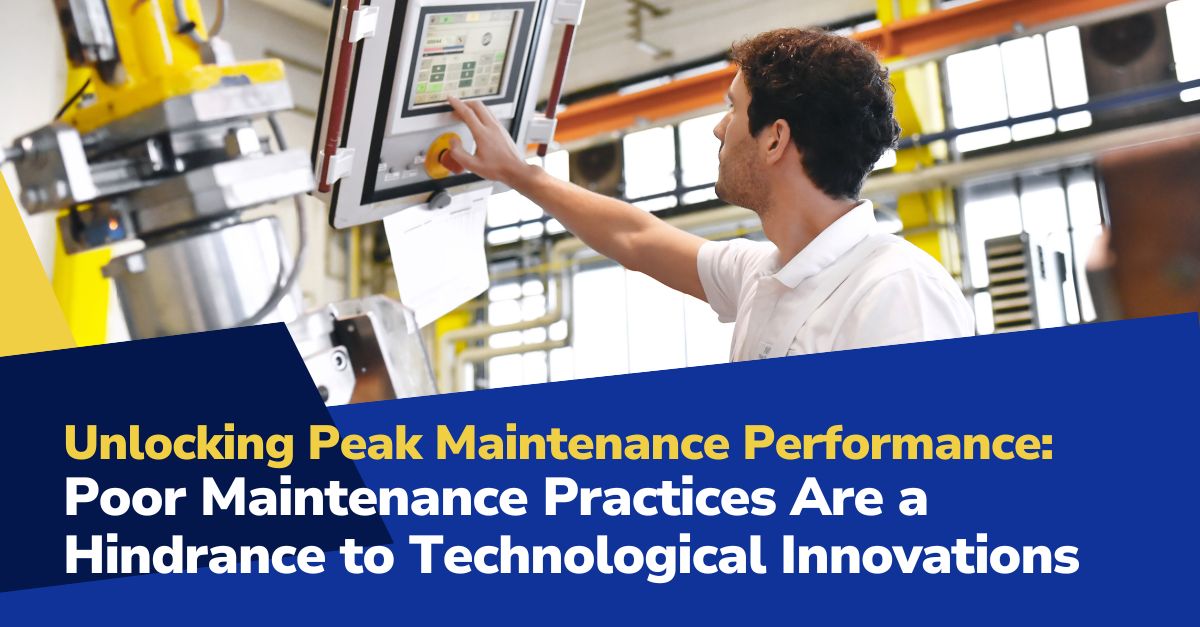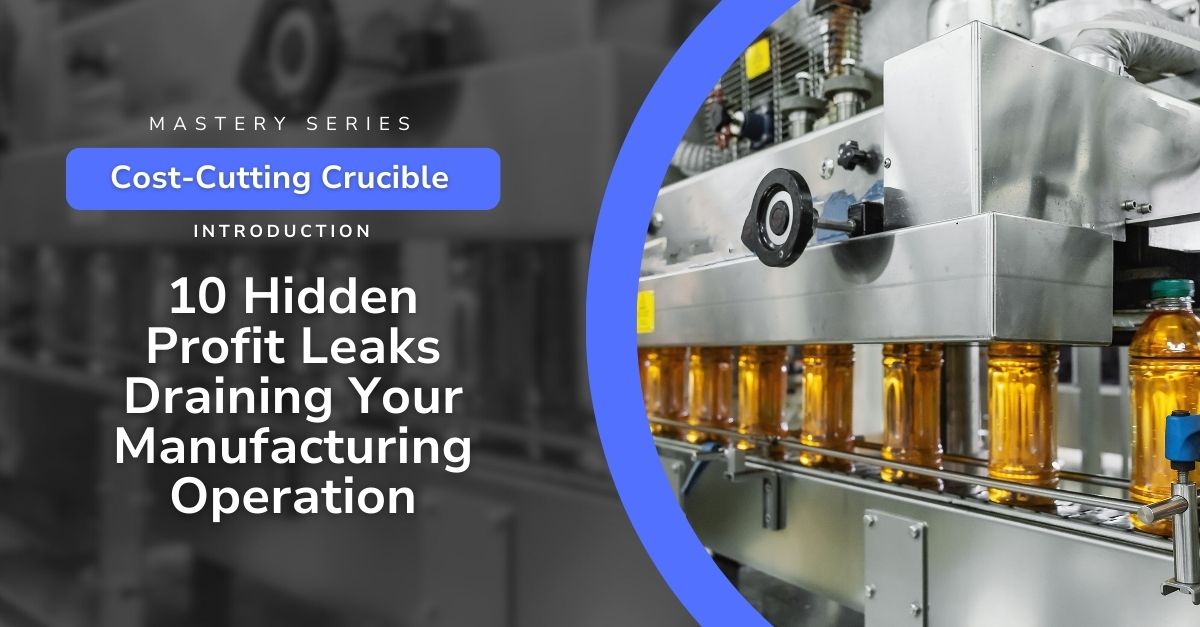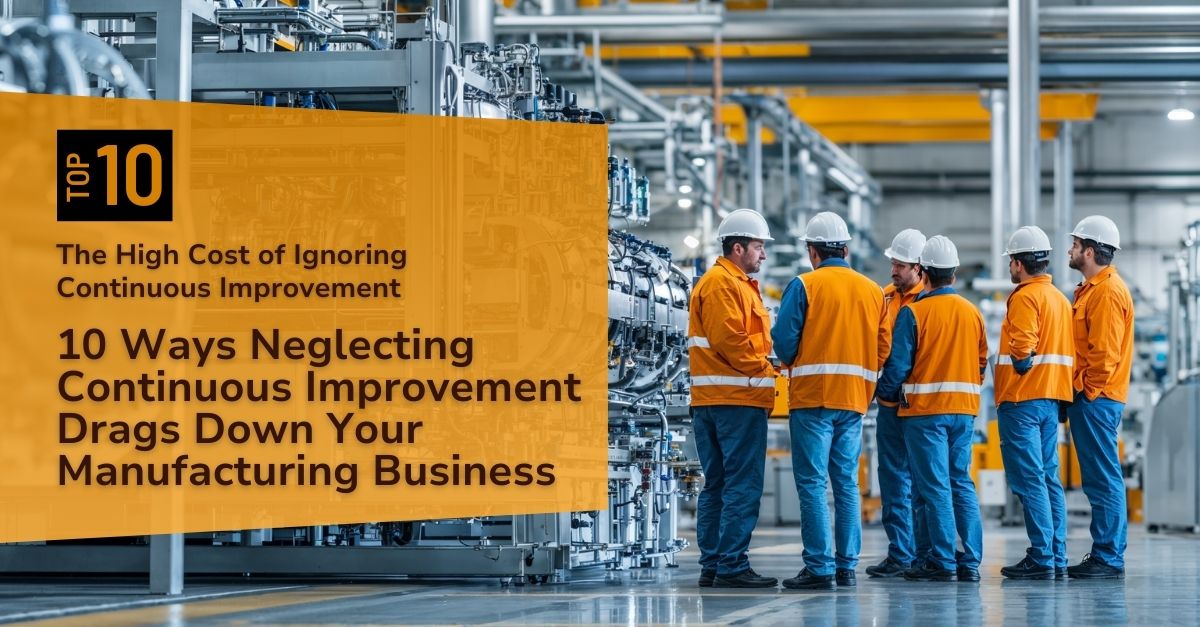
The Technological Gap in Maintenance
Staying ahead of technology is no longer a nice-to-have—it’s essential for manufacturers who want to stay competitive. Yet, many facilities still rely on outdated maintenance practices that can’t keep up with today’s demands.
This ninth installment of our “Unlocking Peak Manufacturing Maintenance Performance” series explores how gaps in adopting modern maintenance technologies quietly drain productivity, increase costs, and limit growth.
Below, we break down ten critical areas where relying on yesterday’s tools and processes creates problems that ripple through operations.
1Failure to Leverage Predictive Maintenance:
Predictive maintenance uses sensor data and AI to forecast equipment issues before they lead to breakdowns. But when manufacturers rely only on reactive or time-based maintenance, they miss the chance to schedule repairs proactively. For example, a plant running older machinery without predictive monitoring can face unexpected failures that shut down entire lines for days. Embracing predictive tools doesn’t just prevent downtime it protects revenue and keeps customer commitments on track.
2Overlooking CMMS and Its Benefits:
A Computerized Maintenance Management System (CMMS) helps organize, schedule, and document every maintenance task. Without it, teams often juggle spreadsheets, paper logs, and scattered emails. This lack of structure causes delays and inconsistent work. One mid-sized facility we worked with reduced maintenance backlogs by 40% within six months of implementing a CMMS, simply by having clearer visibility into work orders and asset histories.
3Inadequate Data Analysis:
Modern maintenance isn’t just about wrench time it’s about using data to make informed decisions. Facilities without tools to collect and analyze equipment performance data often rely on guesswork to set maintenance intervals. That guesswork leads to over-maintaining some assets while neglecting others. Industrial IoT (IIoT) platforms can turn raw sensor data into actionable insights that help maintenance teams target the real drivers of equipment failure.
4Ignoring Digital Twins for Operational Efficiency:
A digital twin is a virtual replica of equipment or systems that helps teams simulate and predict how assets will behave. Ignoring this technology means losing the chance to troubleshoot issues before they happen. For example, running a digital twin of a bottling line can reveal how small process changes impact performance, allowing engineers to adjust settings without risking costly downtime.
5Delayed Response to Market Changes:
In fast-moving industries, the ability to adapt quickly can make or break profitability. Outdated maintenance processes slow down response times. When a new product launch requires reconfiguring production lines, manual maintenance planning can create weeks of delay. Modern systems with real-time data and automated scheduling let teams adjust faster and maintain throughput even as requirements shift.
6Poor Asset Lifecycle Management:
Without advanced maintenance tools, it’s harder to track asset performance over time. That often leads to running equipment past its optimal life or replacing it too early. Advanced analytics help teams make smarter repair-or-replace decisions, balancing cost and reliability. In one case, a manufacturer improved asset utilization by 20% by using lifecycle data to fine-tune replacement plans.
7Underutilization of IIoT for Maintenance Efficiency:
IIoT platforms make it possible to monitor equipment conditions continuously. Facilities that don’t take advantage of this miss out on early warnings that could prevent breakdowns. For example, vibration sensors on pumps can detect bearing wear long before it causes a failure. When that information is connected to a CMMS, maintenance teams can intervene at the right time instead of reacting to emergencies.
8Neglecting the Advantages of Automated Maintenance:
Automation has transformed manufacturing processes but many companies still rely on manual maintenance tasks. Simple automation, such as automatically generating work orders based on sensor readings, reduces errors and speeds up response. More advanced solutions, like robotic inspections, can free up skilled technicians to focus on complex repairs. Manufacturers that stick with all-manual workflows often struggle to keep up with rising performance expectations.
9Failing to Implement MMOS:
An MMOS brings discipline and consistency to maintenance. Without it, processes vary from shift to shift, and performance metrics remain unclear. A structured MMOS aligns planning, execution, and continuous improvement so everyone is working toward the same goals. Teams that adopt it often see gains in uptime, safety, and cost control.
10Overlooking Sustainability through Advanced Maintenance:
Sustainability isn’t just about energy usage it’s about minimizing waste and extending asset life. Modern maintenance strategies support sustainability by reducing scrap, preventing leaks, and optimizing energy consumption. For example, predictive monitoring can detect inefficient motors that consume more power, leading to targeted replacements that cut both costs and environmental impact.
POWERS: Embracing the Future of Maintenance
The fourth industrial revolution offers many tools that can transform maintenance strategies. Manufacturers can significantly improve productivity and financial performance by embracing technologies like CMMS, IIoT, Digital Twins, and MMOS. However, failing to adopt these advancements can create a barrier to technological innovation and hinder a firm’s competitiveness in the global market.
At POWERS, we understand the importance of integrating advanced maintenance strategies into manufacturing operations.
Our Advanced Maintenance Performance (AMP) program is designed to help manufacturers leverage the latest technologies, ensuring operational excellence and long-term success.
We also integrate these tools into our Digital Production System (DPS) framework. DPS is designed to align technology, processes, and people so maintenance improvements translate into measurable performance gains. Whether you need help redesigning maintenance workflows, setting up real-time monitoring, or training teams to use new systems effectively, DPS provides the structure to make change stick.
Are you ready to break the barriers and step into the future of manufacturing? For a comprehensive assessment and guidance on integrating advanced maintenance technologies, contact our dedicated team at +1 678-971-4711 or info@thepowerscompany.com
“Unlocking Peak Manufacturing Maintenance Performance” is a crucial guide for any manufacturer looking to thrive in the modern industrial landscape. In our next installment, we will explore further aspects of optimizing manufacturing performance through effective maintenance strategies.
Continue Reading from this Mastery Series
- Part 1 - The Critical Link Between Maintenance and OEE
- Part 2 - How Maintenance Practices Shape Product Quality
- Part 3 - How Poor Maintenance Standards and Practices Impact Schedule Adherence
- Part 4 - How Maintenance Practices Echo Along the Supply Chain
- Part 5 - The Impact of Maintenance on Maximizing Return on Assets (ROA) in Manufacturing
- Part 6 - Poor Maintenance Practices Lead to Out-of-Control Operational Costs
- Part 7 - Navigating the Safety and Compliance Minefield in Manufacturing
- Part 8 - The High Cost of Overlooking Maintenance in Manufacturing Strategic Planning
- Part 9 - Poor Maintenance Practices Are a Hindrance to Technological Innovations
- Part 10 - Overcoming the ‘Reactive’ or ‘Run Till it Breaks’ Pitfall








